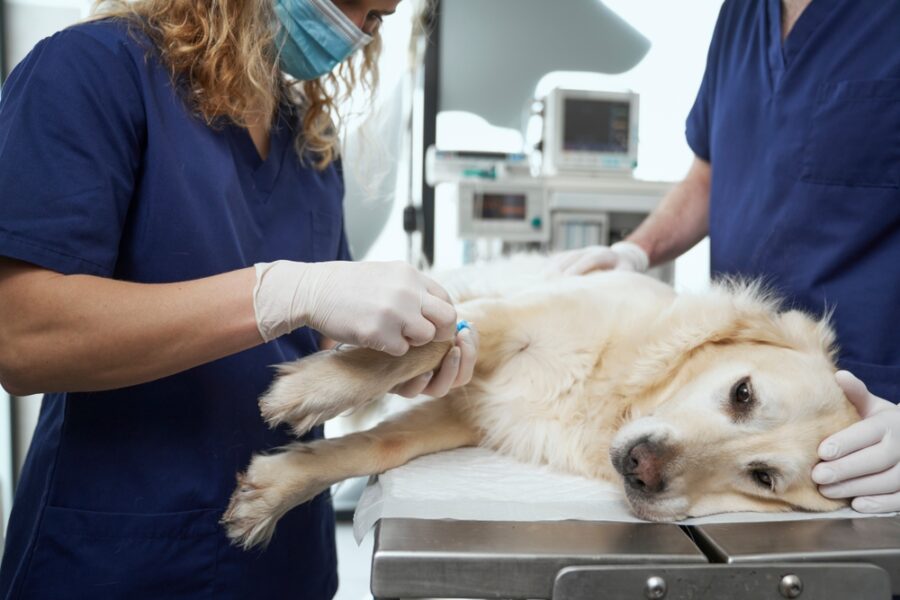Study shows the benefit of an inventive ultrasound-guided nerve-block approach.
Veterinarians understand the importance of ensuring their furry patients undergo surgeries with minimal discomfort. Now, a recent study sheds light on an innovative approach to pain management in dogs undergoing tibial-plateau-leveling-osteotomy (TPLO) surgery.
Study Objective
The objective of the study was to compare the efficacy of sciatic and saphenous ultrasound nerve blocks with and without ultrasound-guided obturator nerve block in TPLO surgery. The research unfolded in two phases, beginning with the identification of an ultrasound window in the inguinal region for the obturator nerve block and progressing to its utilization in dogs undergoing TPLO.
First and Second Phase
In the first phase, the obturator nerve, situated between the pectineus and the abductor muscles, was successfully visualized using an in-plane technique. This discovery paved the way for the second phase, where dogs were randomly assigned to two groups: one receiving three blocks with 0.5% ropivacaine (ON group) and the other (NoON group) with NaCl instead of ropivacaine for the obturator block.
Results
The results were striking. The number of dogs in the NoON group requiring at least one bolus of intraoperative rescue analgesia was significantly higher (p = 0.003) compared to the ON group. This indicates that the addition of an obturator nerve block in the inguinal compartment with an in-plane technique played a crucial role in reducing the need for rescue analgesia during TPLO surgery.
The study advocates for a comprehensive approach to pain management in TPLO surgery, incorporating ultrasound-guided blocks of the obturator nerve alongside sciatic and saphenous nerve blocks. This combined approach not only produced adequate analgesia but also limited motor function impairment. The significance of this lies in the potential for enhanced postoperative recovery and overall comfort for our canine companions.
As veterinary medicine continues to evolve, it is heartening to see advancements that prioritize the well-being of animals. This research opens doors to refined pain management strategies. By testing innovative approaches, we take another step towards ensuring a pain-free and swift recovery for our canine patients.







